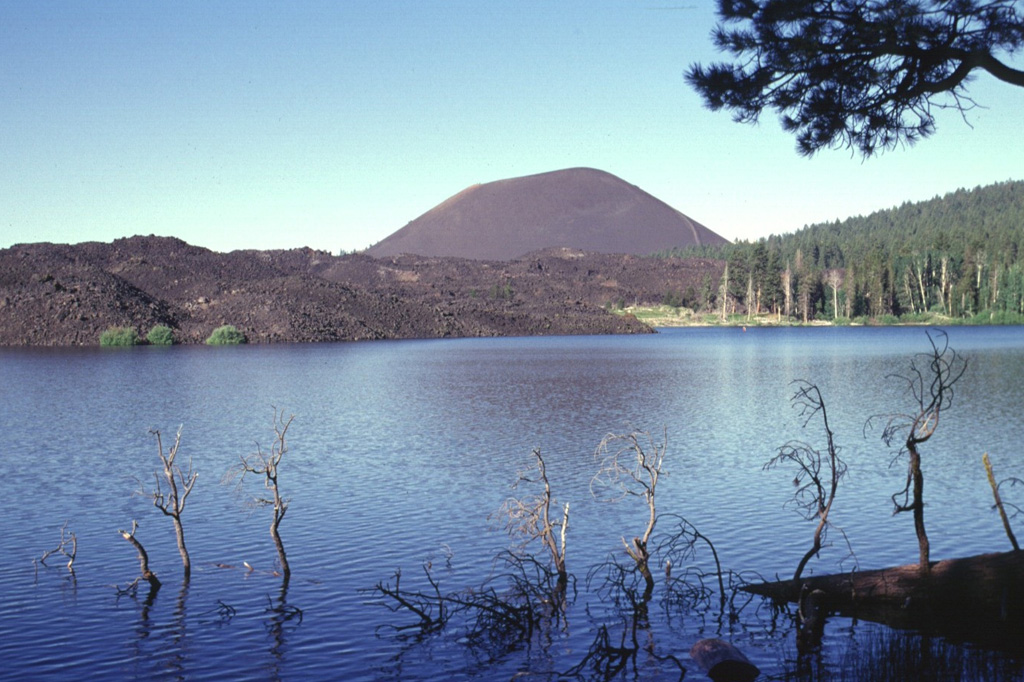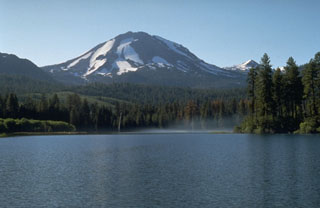Image GVP-06635

The aptly named Cinder Cone, a symmetrical pyroclastic cone at the NE end of the Lassen volcanic center, is seen here from the NE across Butte Lake. The unvegetated lava flow at the left originated from the cone. Although there is a report of an eruption from Cinder Cone in 1850 CE, recent work suggests that the cone and associated lava flows all formed during a brief eruptive interval lasting at most a few decades about 230-425 radiocarbon years ago. Lava flows traveled to the NE and SE, forming Snag Lake and Butte Lake.
Photo by Lee Siebert, 1998 (Smithsonian Institution).
![]() This image is made available under the Public Domain Dedication CC0 license, but proper attribution is appreciated.
This image is made available under the Public Domain Dedication CC0 license, but proper attribution is appreciated.

Lassen Volcanic Center
